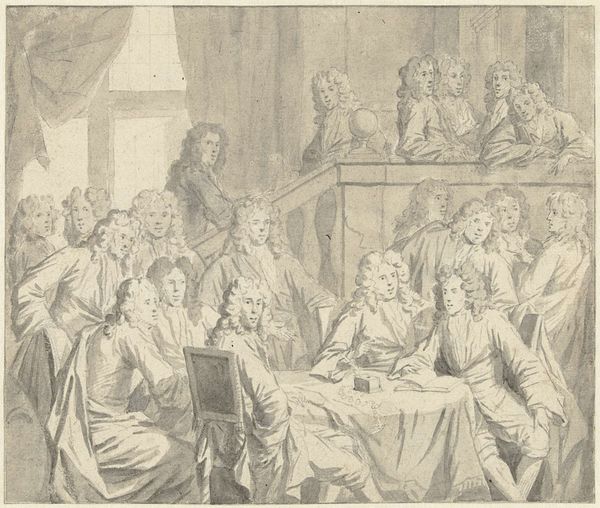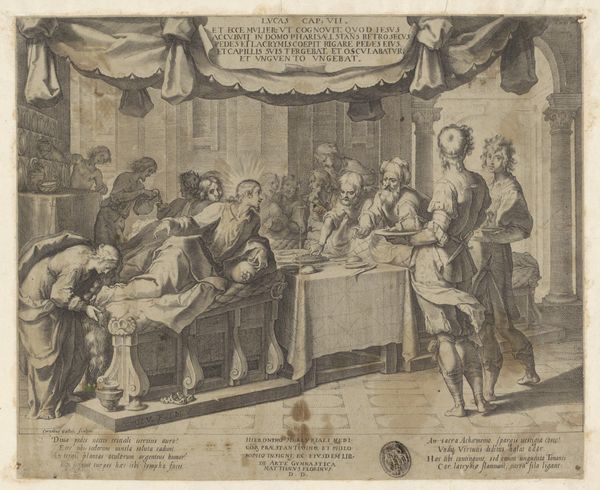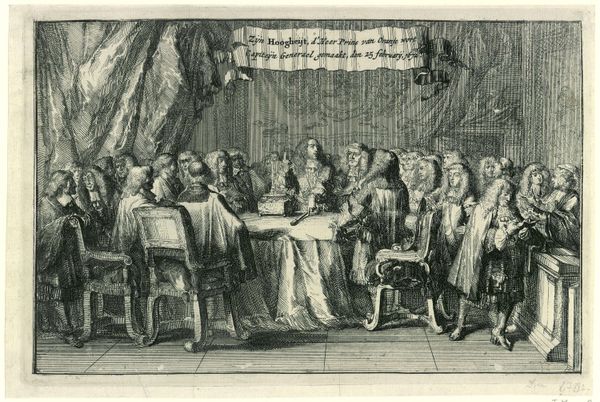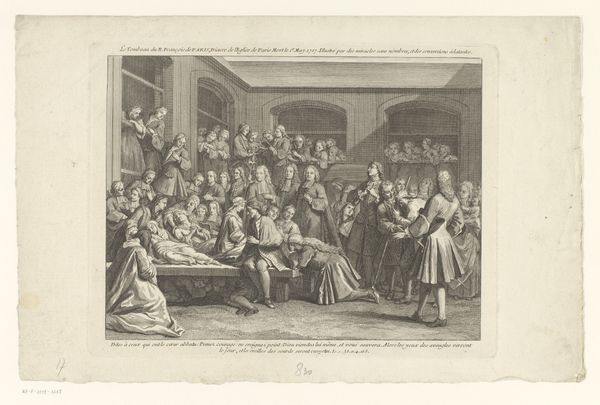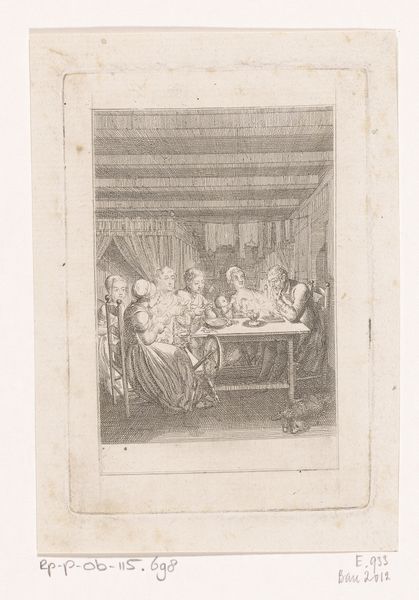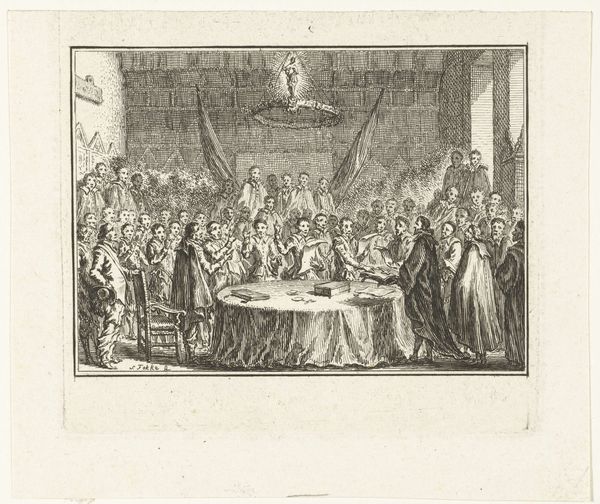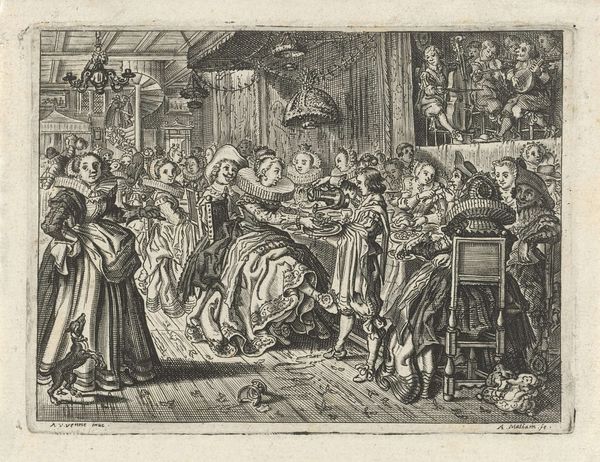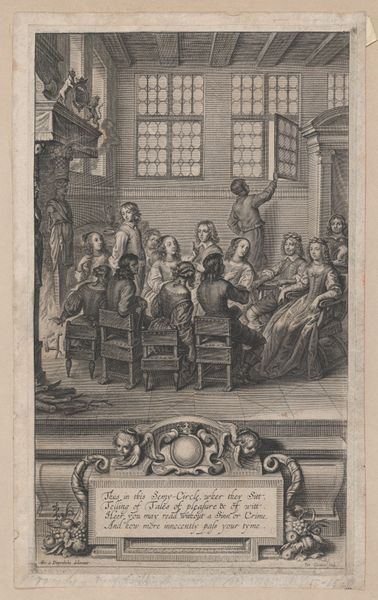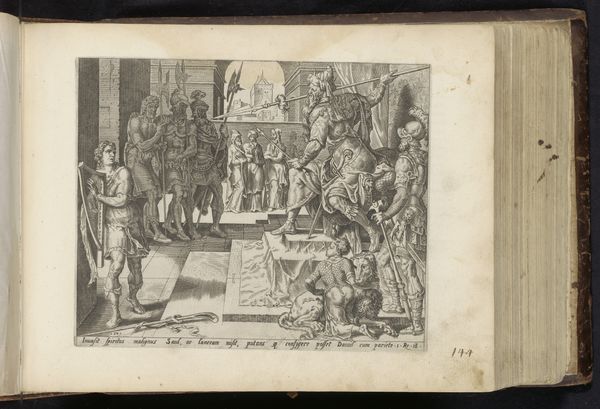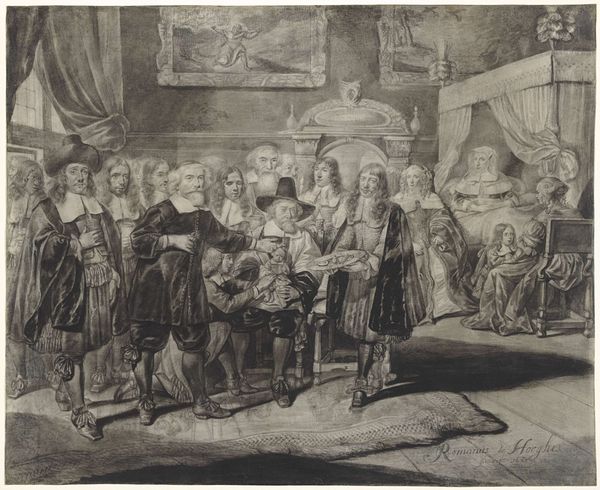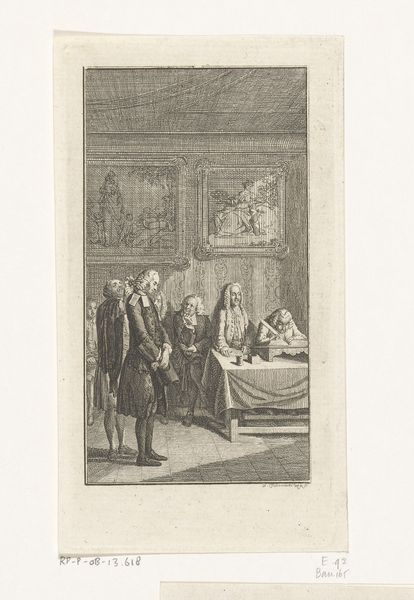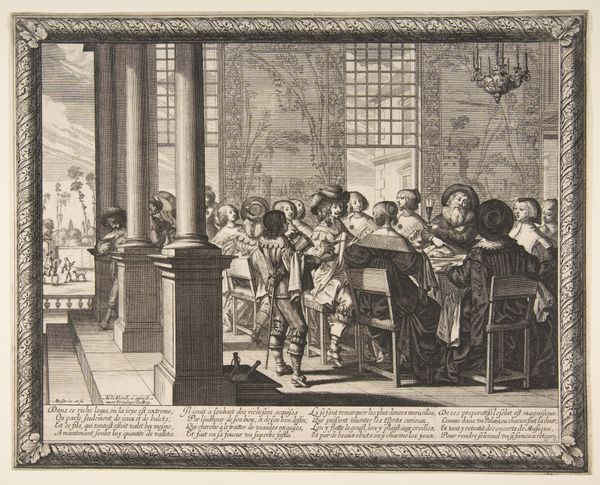
engraving
#
portrait
#
baroque
#
group-portraits
#
history-painting
#
engraving
Dimensions: height 178 mm, width 265 mm
Copyright: Rijks Museum: Open Domain
Curator: This engraving, now in the Rijksmuseum, depicts Willem III being sworn in as stadtholder in 1672. It's attributed to an anonymous artist and thought to have been created sometime after 1674. Editor: The scene feels… formal. A collection of wigs, ermine, and controlled gazes, all tightly composed in monochrome. I wonder, what is being consciously left out of this official picture? Curator: The historical context is key. The Dutch Republic was in crisis, facing invasion. This scene marks a turning point, the reinstatement of the House of Orange amid immense pressure. It visually represents restored authority and stability in the face of national peril. Editor: Absolutely. The very staging feels strategic. Every figure, seemingly an emblem of power arranged carefully in relationship to each other. Yet there's something distancing, as though we, as viewers, are deliberately held outside the circle of power. Who was the intended audience for such an image, and what message were they supposed to internalize? Curator: It was likely circulated to reinforce support for Willem III. Engravings like these were crucial visual propaganda, creating and disseminating an image of strong leadership and national unity. Think of it as carefully orchestrated branding. Editor: That makes me think about representation and accessibility. Given the format and likely distribution, this image would have mostly reached the elites and literate classes. What about the common people and their diverse experiences of that period? Their voices, quite literally, are not inscribed in the image. Curator: True, engravings often served the interests of the powerful. However, these images shaped the collective memory, influencing how future generations perceived this pivotal moment in Dutch history, solidifying Willem's heroic status. Editor: Which raises a question: How do we, today, navigate such curated narratives? Recognizing that this isn’t a transparent window onto the past but a constructed image imbued with ideological intent—a vital step in engaging with both art and history critically. Curator: Precisely. This engraving offers a potent lesson on the role of imagery in shaping historical narratives and wielding social control, reminding us that even seemingly straightforward depictions can carry profound political weight. Editor: So, by analyzing not only what is presented but also what is consciously omitted, we can unlock deeper insights into the social forces and power dynamics at play during Willem III's era.
Comments
No comments
Be the first to comment and join the conversation on the ultimate creative platform.
